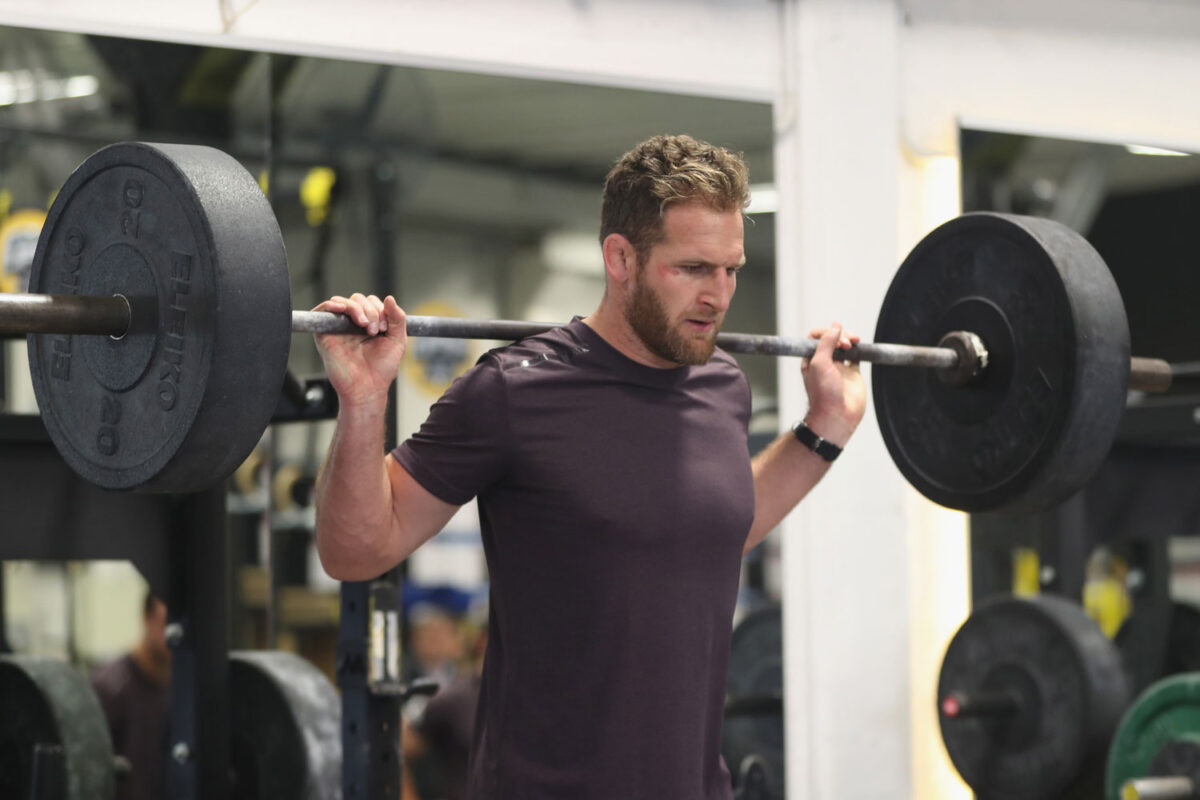‘Jedi’ Training Method To Supercharge Your Strength
Step into any gym and you’ll likely find it is littered with mirrors. Not only a way to create a visual illusion that the space is bigger than it actually is, mirrors are used by all manner of gym junkies to take the compulsory Instagram pic, check yourself out while flexing and to monitor your form as you complete a lift.
The latter is obviously the most important because correct form equals a greater chance of minimising injury and maximising results. But one man suggests we should do away with mirrors and even sight altogether if we are to truly improve our strength.
Dubious? We were too. But hear him out.
Dr Joel Seedman, owner and founder of Advanced Human Performance, a fitness institution that works with a number of professional athletes, has taken to Instagram to suggest we should close our eyes during lifts as it will help to improve our form.
In the video example, we can see a man performing “90-degree isometric squats using the double barbell protocol,” says Dr Joel. Eccentric isometric (EI) is the scientific way of saying “pause reps”, where one pauses at the top or bottom of a lift, before returning to the starting position. Dr Joel adds on his website, “I can honestly say that I’ve found nothing more effective than EI’s for enhancing strength, performance, muscle mass, and muscle function.”
Continuing, Joel says: “When it comes to mastering one’s movement, optimising motor control & body mechanics is the name of the game.” To do this effectively, he says, it “comes down to responding to subtle & virtually imperceptible inputs deep within the nervous system that are not visible to the naked eye & can only be tuned into the neuromuscular level by the individual themselves.”
He goes on to say that we should lessen our reliance on mirrors: “It is also why, individuals should rarely use the mirror when training.”
“The better an athlete can become at tuning into this subtle yet critical feedback, the more they will be able to master their mechanic.”
“Eyes-closed training improves movement mechanics & muscle function particularly when combined with 90 degree eccentric isometrics.”
Explaining his radical way of thinking, Dr Joel adds, “The reason for this is that closing your eyes on any exercise forces muscle spindles & other proprioceptive mechanisms.” Healthline states that proprioception is, “the body’s ability to sense its location, movements, and actions. It’s the reason we’re able to move freely without consciously thinking about our environment.”
“In other words,” Joel continues: “It teaches the lifter to rely more on kinaesthetic awareness rather than sight.”
“Instead of watching yourself through the movement, feel your way through the movement.”
“Over time this leads to greater strength, muscle & joint health. Combine with advanced stabilisation methods such as the double barbell to further challenge proprioception & motor control.”
How so? Joel provides further explanation on his website:
“Humans rely on the integration of 3 primary sensory systems when it comes to balance. These include the visual/ocular system, the vestibular system in the inner ear that senses motion of the head in space and helps with equilibrium, and the neuromuscular or proprioceptive systems such as muscle spindles.”
“Eliminating one of these, for example the visual system, forces the other systems, particularly the proprioceptive system, to work harder in order to maintain control of movement. In other words, there will be increased proprioceptive feedback to make up for the lack of feedback from the other mechanism(s).”
“Over time this likely improves our ability to balance, stabilize, and control our movement as these proprioceptive systems have been trained to operate at a higher level.”
So, this isn’t to say you should now just jump into the eyes closed method for all lifts next time you’re at the gym. However, you could attempt a few basic tests with your eyes closed to assess your current proprioception.
For example, you could close your eyes and march on the spot for a minute. When you open your eyes, you may find you’ve moved from your original position, the farther you’ve moved, the weaker your proprioception.
Perform this test a few times, and once your awareness improve, you can then work on incorporating it in the gym. Perform a few reps with your eyes open, so you can become familiar with the space around you, and then perform a few more with your eyes closed. It could be wise to have a spotter with you, just in case something goes wrong.
But Joel’s argument certainly seems to carry a lot of weight – and if all goes well, by using it, you will too.
